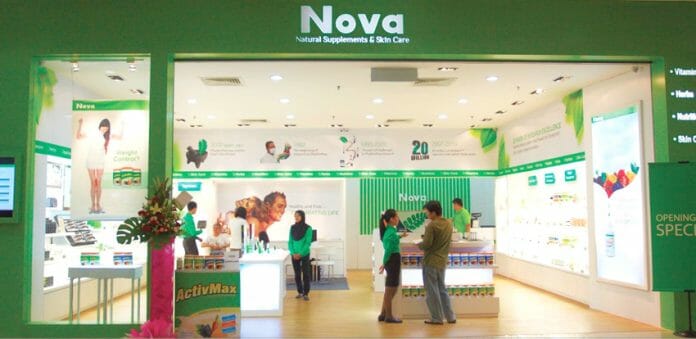Kenanga Research has come away from a recent engagement with NOVA Wellness feeling reassured of its outlook ahead. Some of the key takeaways are as follows:
The group guided for a 15-18% volume growth (which is consistent with our FY23F assumption of 17%), having chalked up an average volume growth rate of 16-18% in FY20-FY22. There has been a surge in demand for health supplement products as consumers take precautionary steps amidst rising cases of the common flu and influenza-like illnesses (following increased contacts within the population after the lifting of pandemic restrictions).
Specifically, FY23 volume growth is expected to be fueled by full-year impact from the introduction of 35 new SKUs in FY22 (compared to FY21 of 15 new SKUs) including 6 low glycemic index bread (croissant and sourdough bread), 6 health supplements, and 23 Activmax and Sustinex range of functional food products such as plant-based protein including specialty Activmax for hospitals. Activmax and Sustinex are house brand products developed with embedded vitamins and other nutrients to fulfill consumers’ nutritional needs.
The group has made further inroads over the past 18 months penetrating into the local public hospitals which has grown from initially 32 to presently 50 and presently accounts for <5% of revenue for its nutritional products. The group saw doubling of distributors to over 900 with target to increase this to 1,200 by FY25.
The research house is unperturbed by the recurring amortisation to the tune of RM1-2m per annum arising from the development of new products which is expected to be offset by its incremental revenue. Typically, impairment of intangible assets (non-cash items) relates to impairment of research and development products which is capitalised in the balance sheet. Once the product is commercialised, the R&D costs related to the products is amortised on a straight-line basis based on expected product life span between 5 to 10 years. It is recurring as long as the R&D project for new products continues.
Looking ahead in FY23, EBITDA margins is expected to revert back to between 46-48% compared to 45% in FY22 (vs. the research house’s FY23F assumption of 48%) following the absence of start-up cost incurred arising from commercial production of its new plant. Due to better economies of scale and efficiency coupled with incremental revenue, the new plant is expected to have better overhead absorption and hence margin improvements.
The group have raised ASPs by 4-5% over the past six months across a range of products to fully pass on higher costs arising from the weakness in MYR (its raw and packaging materials purchased are denominated in RMB and USD). It is believed this is a reflection of the low “price elasticity of demand” of the industry. This key input accounts for an estimated 30% of total cost. The research house has factored ASP to increase by 2% in its FY23F earnings.
Meanwhile, the research house has maintained its earnings forecasts. Target price (TP) of RM1.09 with OUTPERFORM call.
Investment case. Kenanga Research likes NOVA for its: (i) integrated business model which encompasses the entire spectrum of pharmaceutical value chain from product conceptualization starting from R&D to manufacturing and sales, (ii) superior margins due to its original brand manufacturer (OBM) business model, and (iii) earnings growth driven by capacity
expansion, a widening distribution network and penetration into local public hospitals. The research house values NOVA at RM1.09 based on 15x CY23F EPS, in line with closest comparable peers. There is no adjustment to its TP based on ESG given a 3-star ESG rating.
Risks include: (i) intense competition from existing/new and local/foreign players, (ii) weak MYR resulting in high cost of imported inputs, and (iii) product safety and regulatory risks.
Salient Points:-
Price: RM0.89
Target Price: RM1.09
Expected Capital Gain: 0.200 22.5%
Expected Dividend Yield: 0.020 2.6%
Expected Total Gain: 0.220 25.1%









